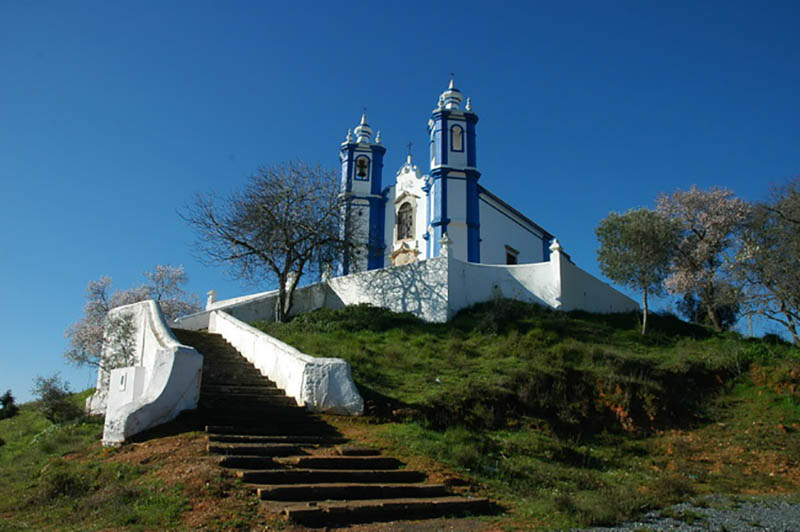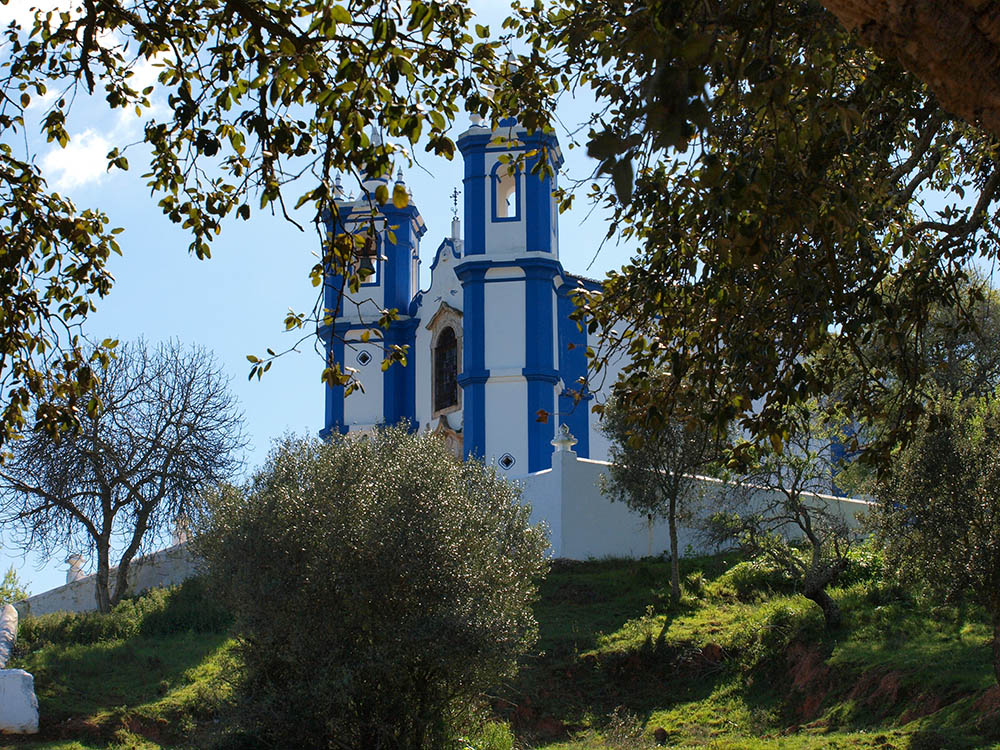The sixth assault on the hermitage of Nossa Senhora da Assunção, 3 kilometers from the Alentejo town of Messejana, leads the Diocese of Beja to classify it as a “martyr monument”, which needs attention, and to call for the involvement of others entities.
According to the Diocese, “while carrying out a routine task in the surroundings, on 20 November, officials from the Aljustrel City Council came across the open doors of the church. Since there has been a record of thefts, this is the sixth time that the building, classified as a Monument of Public Interest, but in a poor state of conservation, has been attacked by thieves. A situation that the Department of Historical and Artistic Heritage of the Diocese of Beja classifies as “worrying”. In addition to the loss of assets to be regretted, the issue sows unrest among the population».
The chapel of Nossa Senhora da Assunção has been documented since the 1755th century and has been an important place of pilgrimage ever since, which explains – as recent investigations have highlighted – the successive campaigns of works that it received, even the one that it would give to it, in a stage already after the XNUMX earthquake, its current physiognomy.
The fact that the church is located in the vicinity of the Messejana geological fault makes it very sensitive to earthquakes. In 1755, it was completely ruined, but in 1758 it was already being rebuilt, with the collaboration of Diogo Tavares de Brito, from Tavira, one of the most important master masons (today we would say architect) of the neighboring Algarve at the time.
The construction program of the remarkable property stands out, according to these same studies, «simultaneously conservative in terms of the typology of its floor plan and openly baroque in terms of the exterior, where the concern with movement, contrasts of light and shadow and even of eruditism is evident from the staircase, to the façade».
As for the interior, of great austerity, it follows the models of “ground floor” architecture, evidencing a single nave and chancel, where all the decorative effort of the interior is concentrated, achieved through the retable of rococo carving of the high altar and the use of panels with blue and white Marian themes and frames already announcing the rococo.
The façade, which is accessed by a staircase that assumes the baroque dynamics, has a central register, where the portal opens, surmounted by a large window, flanked by two towers placed obliquely, giving movement to the entire façade.
This peculiar placement of the towers, rare in Portuguese architecture (it can be found in the church of Senhor Jesus da Piedade, in Elvas), was widely used in Brazil, after the construction of the famous church of Conceição da Praia, in São Salvador da Bay.
But also the two rooms, with a hexagonal plan, which are connected on either side of the chancel, reveal an unusual typology.
All this makes the hermitage of Nossa Senhora da Assunção one of the main references of Baroque in Alentejo, well recognizable from a distance, punctuating one of the most beautiful landscapes of Campo Branco.
But the isolation of this pilgrimage sanctuary has proved adverse. «Since 1984, the church has been robbed and vandalized six times, the situation it has reached is scandalous», stresses José António Falcão, director of the Department of Historical and Artistic Heritage of the Diocese of Beja.
And he adds: “there was a concern to classify it, which is commendable, but then nothing was done; classification alone is of little use – this extraordinary building must be brought back to life”.
A "martyr monument"
 The church of Nossa Senhora da Assunção is, for the person responsible for the heritage of the Diocese of Beja, the perfect example of a “martyr monument”.
The church of Nossa Senhora da Assunção is, for the person responsible for the heritage of the Diocese of Beja, the perfect example of a “martyr monument”.
In the early 1980s, thieves removed the implements and partially sawed off the altarpiece of the main altar, in gilded woodwork, which was amputated. There would follow new dilapidations, which the parish community followed with concern, but without sufficient means to assist all its churches.
This time, perhaps because they were surprised before concluding the prey, the “friends of the other person” abandoned, at the expense of carving pieces and other elements that they had just cut. The altarpiece, which was already in a precarious situation, was now in a terrible state, as warned by a source from the Manufacturing Commission who preferred to remain anonymous.
There was no such luck, however, with the only bell that remained in the church steeples. When the parish priest Father Luís Fernandes took charge of the event, he was alerted by the people to the disappearance of this large piece, cast in the XNUMXth century, whose weight is estimated at more than half a ton.
To remove it, it will have taken at least three people, a paraphernalia of cables and pulleys and a few hours of work. “The isolation of the site and the lack of surveillance made this an almost perfect crime”, laments the Diocese of Beja. It is now feared that the bell, in very pure bronze, could be cast, perhaps in neighboring Spain.
All of this causes, as the parish priest stressed, a feeling of consternation and powerlessness in the local community. The social alarm has sounded, but disgust goes hand in hand with impotence, since the means of the parish are modest.
In turn, Ercília Diogo, president of the Parish Council of Messejana, drew attention to “the worrying state of the building, in terms of the vault and the supporting stones for the windows and doors”. The problem clearly goes beyond what can be done on a local scale. What will be the future of an isolated monument, in a small inland land?
“Portugal is struggling with the absence of a strategic plan for safeguarding religious heritage in rural areas and dioceses are finding it increasingly difficult to ensure the protection of the heritage under their tutelage; a certain lack of coordination between public investment, the possibility of integrating buildings into cultural and tourist routes, the lack of policing and the desertification of the interior is a heavy toll and jeopardizes the future of many monuments”, says José António Falcão. And it evokes a history that, although little known, has decisively marked the work of recovering the religious monuments of Baixo Alentejo.
In 1969, when the chapel of Nossa Senhora da Assunção was again ruined due to the earthquake that year, the district services of the Ministry of Public Works contemplated the possibility of razing it.
By chance, a Brazilian architect, Augusto da Silva Telles, a professor at the Faculty of Architecture of Rio de Janeiro, who would later head the National Historical and Artistic Heritage Institute of Brazil, was visiting the Alentejo. It was he who explained to the stunned authorities in Beja the meaning of that church for Portuguese-Brazilian art, saving it.
Recalling these circumstances, José António Falcão says that the monument's future now depends on concerted action between the local authorities, the Ministry of Culture, the Parish and the Diocese to save the building.
The director of the Heritage Department of the Diocese of Beja goes further: “only the existence of a strategy for monitoring and visiting isolated churches can help reduce these attacks; we cannot continue to defend that worship is enough to keep religious buildings open, it needs to act alongside other measures, cultural and touristic; it would be very interesting for the Campo Branco area to give body to an initiative in this area”. Also because, next time, there may not be the luck of having employees of the City Council around...



















Comments